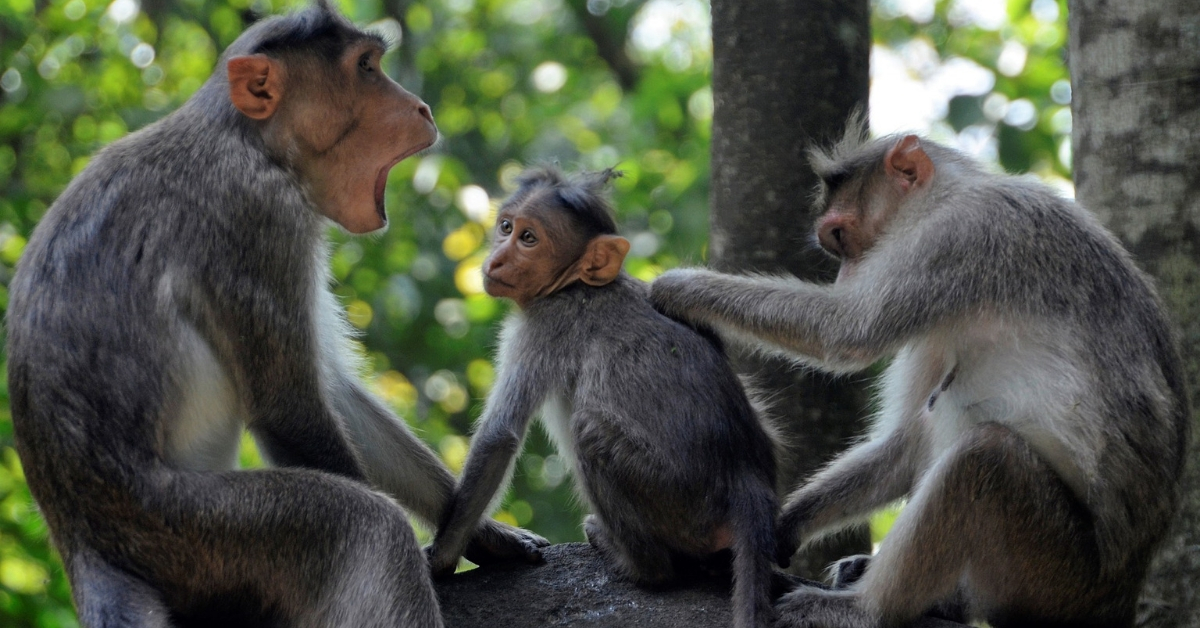Odisha Plans Fruitful Future for its Monkeys, to Plant Over 1 Lakh Fruit Trees Just for Them!
A total of 1,15,000 tress will be planted in the dense forest of Kalahandi district in Odisha to bring back the monkeys to their habitation

”Do not feed the monkeys!”, “Leave them alone, and they will leave you alone,” “Ignore the monkey and walk away calmly,” and even “Don’t worry if they make Kho-Kho sound!”
These are warnings that the Lok Sabha Secretariat circular offered to deal with the monkey-man battle at the Parliament!
Such warnings, often seen in zoos, have become a common sight in the urban landscape in India. The monkeys have declared war.
The authorities in-charge of solving this menace continue to blame the monkeys for harassing humans and disrupting everyday life. However, the fact remains that shrinking forests and tree felling are forcing monkeys to barge into human habitations for food.
Another reason why the monkeys are encouraged to roam freely in religious places and tourist spots is their association with the monkey-faced Hindu god Hanuman. People often feed monkeys due to this belief and while doing so, open themselves to health risks. Monkey bites include serious wound infections, herpes B virus, and rabies.
The issue of monkeys lurking around and causing problems is no different on the Bhawanipatna-Lanjigarh road in the Kalahandi district, Odisha. And in a bid to end the monkey nuisance, the State Forest Department has come up with a plan to plant fruit-bearing trees on the 5-km stretch between Biswanathpur and Kadalighat to lure the monkeys to a place that feels like home.
A total of five lakh trees will be planted of which 1,15,000 tress will be fruit trees like amla, cashew, custard apple, jackfruit, guava, mango, apple, etc. More than 350 acres of land will exclusively be made available for this exercise.
Confirming the news to The Better India, Divisional Forest Officer T. Ashok Kumar of Kalahandi Division (South) said, “Every year, we have to plant trees under the State’s Forest Scheme. This year we have taken into account the issue of monkeys lurking on the roads and causing problem for the travelers and tourists. Thousands of monkeys leave forests in search of food and thus we will start the plantation of food-bearing trees from July.”
Besides increasing the green cover, the Kalahandi forest authorities have also put up numerous signage to discourage people from feeding the monkeys. However, due to heavy traffic flow on the Bhawanipatna-Lanjigarh road, monkeys rush from all directions once the vehicles slow-down.
If it was a matter of a few monkeys, we would have relocated them to the forest, but here we are talking about thousands of them. The fruit bearing tress will be planted on both sides of the roads so that the monkeys don’t have to go all the way inside the forest, says Kumar.
When asked if there are any serious accidents that have occurred due to monkeys, Kumar listed out a couple of monkeys who sadly came under the vehicles. But there has not been any complaint from the citizens or from the villagers residing close to the Kalahandi forest.
“We are all aware of the monkey attacks on humans and agricultural produce. Though in Kalahandi, the situation isn’t that grave when compared to other regions in India. We want to make sure we nip the problem in the bud before it’s too late,” adds Kumar.
The seeds will be sown this July and the forest department hopes that in the coming few years the trees are ready to bring the monkeys back in their habitat.
The concept of luring monkeys was inspired from an experiment that was undertaken in the Biswanathpur forest range four years ago. The forest personnel had planted fruit-bearing trees on 40 hectares of land. The trees have slowly started to bear fruits and in the upcoming months, if the operation succeeds, then it will be scaled up in other forest areas of the State as well.
While there are several incidents where monkeys have attacked humans, the issue is unprecedented in Delhi. Close to 25,000 monkeys are to be relocated from the city, the Times of India reports. The State Forest Department has prepared a draft plan to sterilise them over a period of three years at a cost of Rs 23 crore. However, experts have warned that sterilising them could make them more aggressive.
In a situation like this where animals are losing their natural habitat and thus foraying into human settlements, Odisha forest department’s initiative can bring a long-term relief to the monkeys, humans and the environment.
Also Read: This Mumbaikar Might Be Only 26 But He Has Already Rescued 10,000+ Animals!
Featured Image Photo Source: Pixabay
(Edited By Saiqua Sultan)
Like this story? Or have something to share?
Write to us: [email protected]
Connect with us on Facebook and Twitter.
This story made me
- 97
- 121
- 89
- 167
Tell Us More
We bring stories straight from the heart of India, to inspire millions and create a wave of impact. Our positive movement is growing bigger everyday, and we would love for you to join it.
Please contribute whatever you can, every little penny helps our team in bringing you more stories that support dreams and spread hope.



















